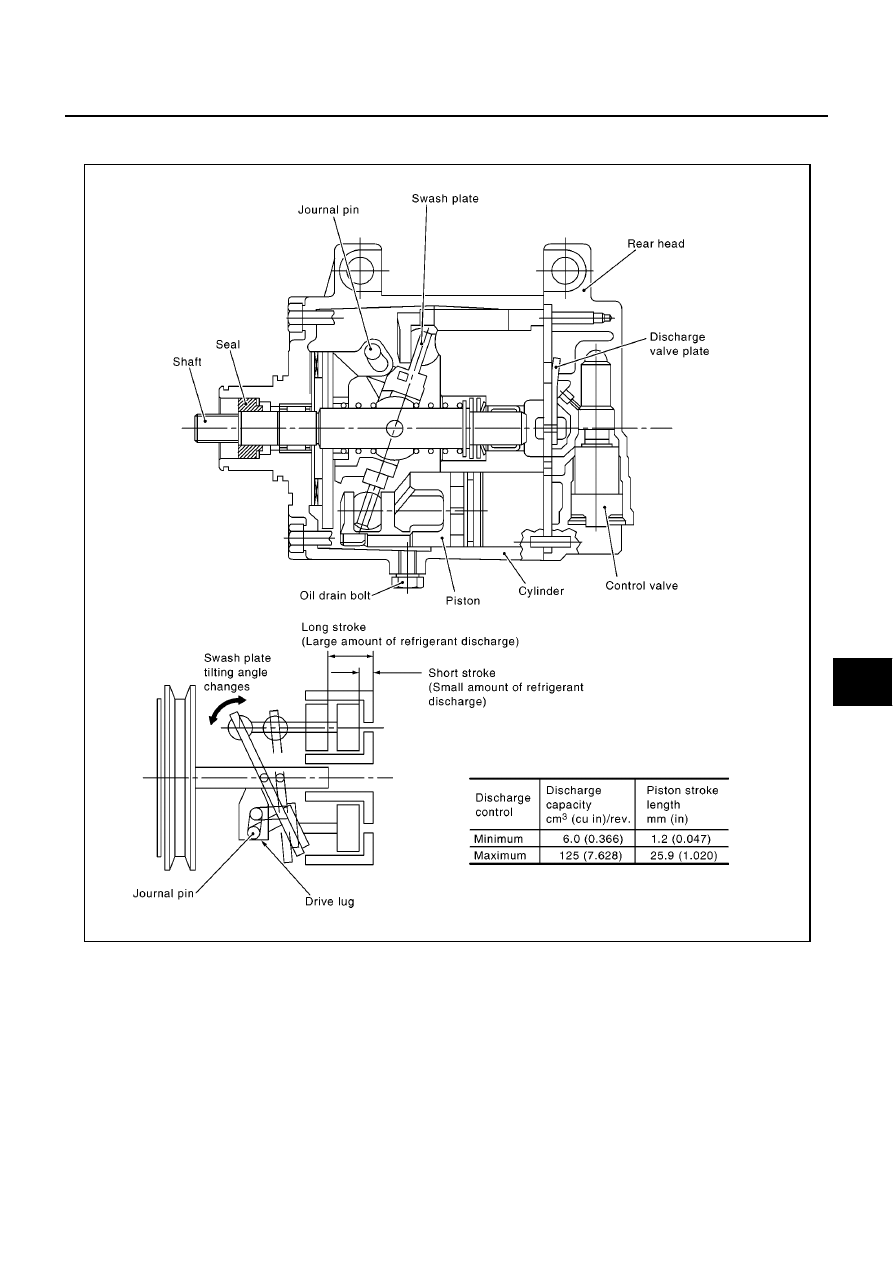Almera Tino V10 (2003 year). Manual - part 35

REFRIGERATION SYSTEM
ATC-17
C
D
E
F
G
H
I
K
L
M
A
B
ATC
The tilt of the swash plate allows the piston
′
s stroke to change so that refrigerant discharge can be continu-
ously changed from 6.0 to 125 cm
3
(0.366 to 7.628 cu. in).
Operation
1.
Operation Control Valve
Operation control valve is located in the suction port (low-pressure) side, and opens or closes in response
to changes in refrigerant suction pressure.
Operation of the valve controls the internal pressure of the crankcase.
The angle of the swash plate is controlled between the crankcase
′
s internal pressure and the piston cylin-
der pressure.
2.
Maximum Cooling
Refrigerant pressure on the low–pressure side increases with an increase in heat loads.
When this occurs, the control valve
′
s bellows compress to open the low-pressure side valve and close the
high-pressure side valve.
This causes the following pressure changes:
●
The crankcase
′
s internal pressure to equal the pressure on the low-pressure side;
RHA854HA